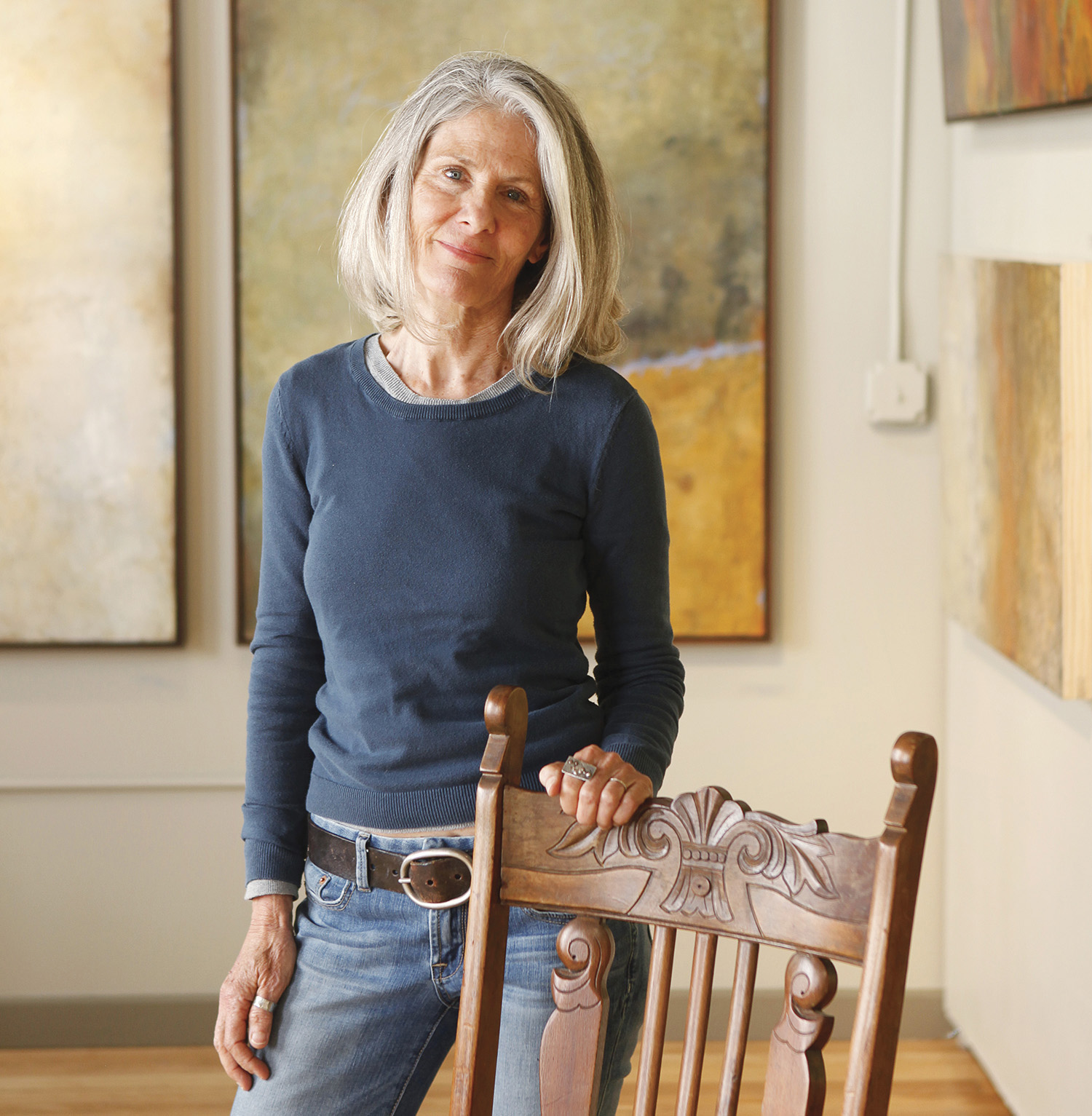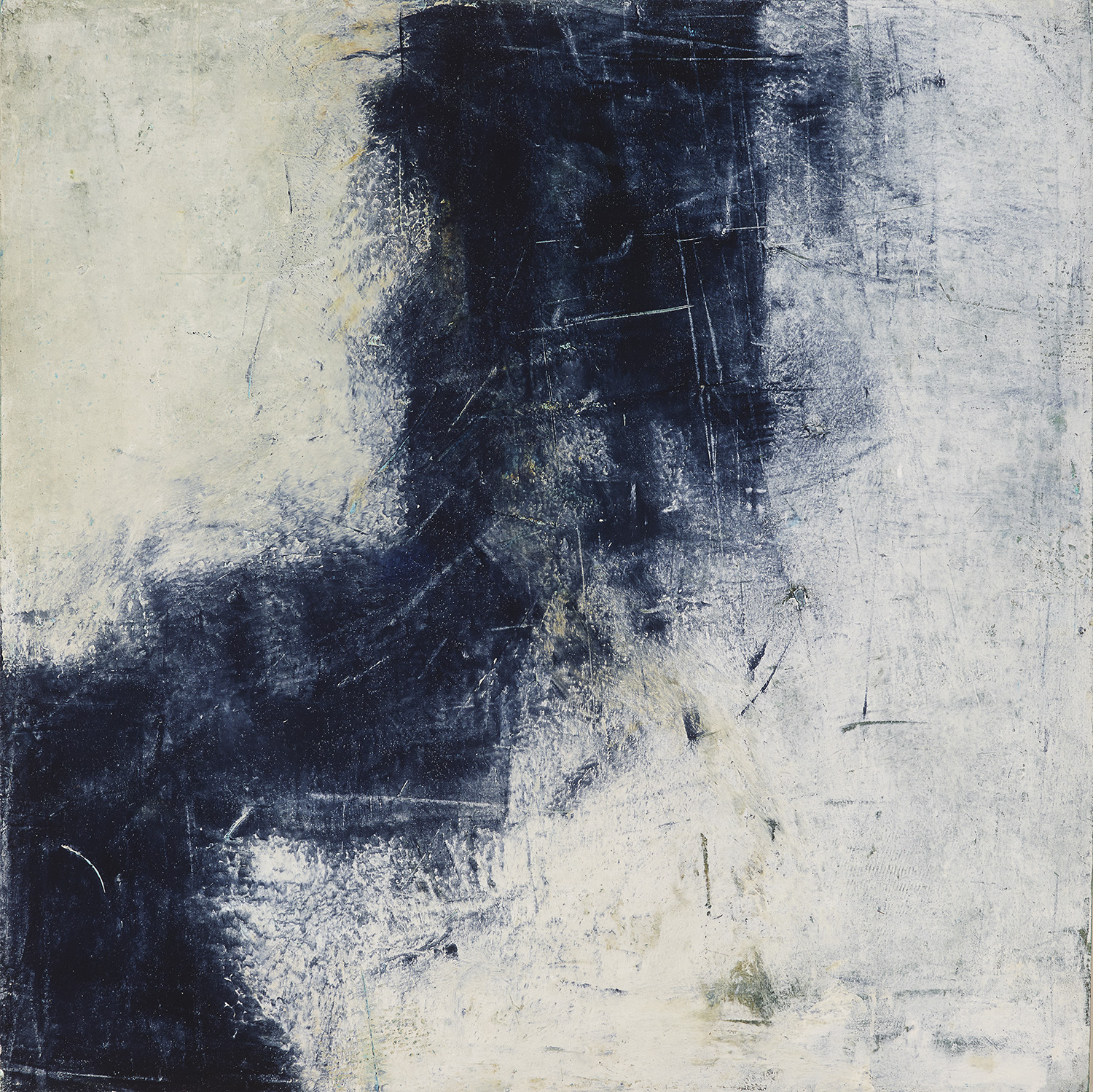
Asheville artist Victoria Pinney freely admits that her creative history doesn’t include formal training in the arts. “I’m a late bloomer,” says Pinney. “I never went to art school or even took an art class through all my years at school.” But there were signs that a future in the arts might lay in store. Her sister, Melissa Ann Pinney, is a well-respected fine-art photographer whose work is contained in the permanent collections of the Whitney Museum and MoMA in New York, and in The Art Institute of Chicago. Their mother also had a creative flair, and was known among friends for her lively sense of color.
Victoria, too, was fascinated by color, but “I had no idea how to begin,” she says. “In the back of my mind there was always the example of Grandma Moses, offering hope and possibility that it might not be too late.”
Then, several years ago, after she and her husband moved to Asheville from Florida, the muse struck in the form of a weekend course in encaustics that she took on a whim. The way the blowtorch and the hot wax moved color around a canvas opened the door to creative exploration — and to what has now become an impressive body of abstract color studies that, on repeated observations, draw a viewer ever deeper into their complex structure. “Abstract art holds so much emotion for me. It’s fluid and ever-changing,” says Pinney, citing as influences Mark Rothko, Joan Mitchell, and Helen Frankenthaler — all giants of mid-20th-century Abstract Expressionism who explored the emotional resonances of color, space, and texture.

For Pinney, working in encaustic encapsulated the Expressionists’ determination to break the careful lines and contours of more classical forms, to strip away the boundaries of convention and tradition. “Encaustic was a liberating process for me,” Pinney acknowledges. “It couldn’t epitomize drawing outside of the lines any better.” Which isn’t to say that Victoria didn’t adapt the process to her own sensibilities, turning from the laborious and often dangerous combination of hot wax, oil paint, and a blow torch to the more easily manipulated duo of cold wax and oil. But it still allows her to use most of the same techniques she developed initially, incorporating textured materials like sand and marble dust, scraping away layers of built-up wax and paint while leaving the signature crannies, crevasses, and ridges of traditional encaustic.
“Excavating” is a word Pinney often uses to describe the development of a new work. “I build up layers and layers of ‘history,’ which I scratch through and then build up again until the image reveals itself to me,” she explains. “My paintings feel ancient to me, as though they contain all of history. They allow peeks at the past through the erosion of the present.”
A new work’s final state may take weeks to become evident, put aside for days until the painting suggests something further might be needed. “It may just need a pop of color or a complete do-over,” Pinney says. “But it’s never a catastrophe, just more layers of color and texture to work with. I can end up with a completely different piece, and I have before-and-after photos that show it’s impossible to tell where one thing suddenly turned into another.” Her studio is replete with not only the traditional tools of the painter, but kitchen tools such as rubber bowl scrapers, wax paper, and pizza cutters, not to mention hair rollers, tissue paper, and whatever else can add to the sensuality of a piece.
Although she sometimes works purely in oil, Pinney’s encaustic-inspired canvases emphasize her talent as a colorist. She favors a fairly quiet palette, but some of her work glows with bright reds, blues, or greens. “I often develop a crush on a particular color and it will appear in various shades in my work,” she says. “I want people to be able to see into my paintings, and so I love transparent paints that, when combined with texture, create that depth. The textured surface is as important in appreciating the painting as is color or shape.”
An active member of Asheville’s River Arts District Business Association and a featured artist in the WNC Design Guide, a curated interiors collective, Pinney works nearly every day out of what she calls her “dream studio” in the district’s Cotton Mill Studios. “It has beautiful natural light, with the river out one window and trains going by out the other,” she says. Bathed in the shimmering river light are her current works, some of them commissioned privately (a growing part of her practice after she was named by the arts magazine Art Galleries & Artists of the South as an important emerging artist).
“Visitors to my studio often comment that my paintings are serene, meditative — at least on the surface,” Pinney notes. “But there is much going on the more you look.”
Victoria Pinney’s work can be viewed online at victoriapinney.com. She welcomes visitors to her Cotton Mill studio (122 Riverside Drive in Asheville’s River Arts District) during normal business hours.
